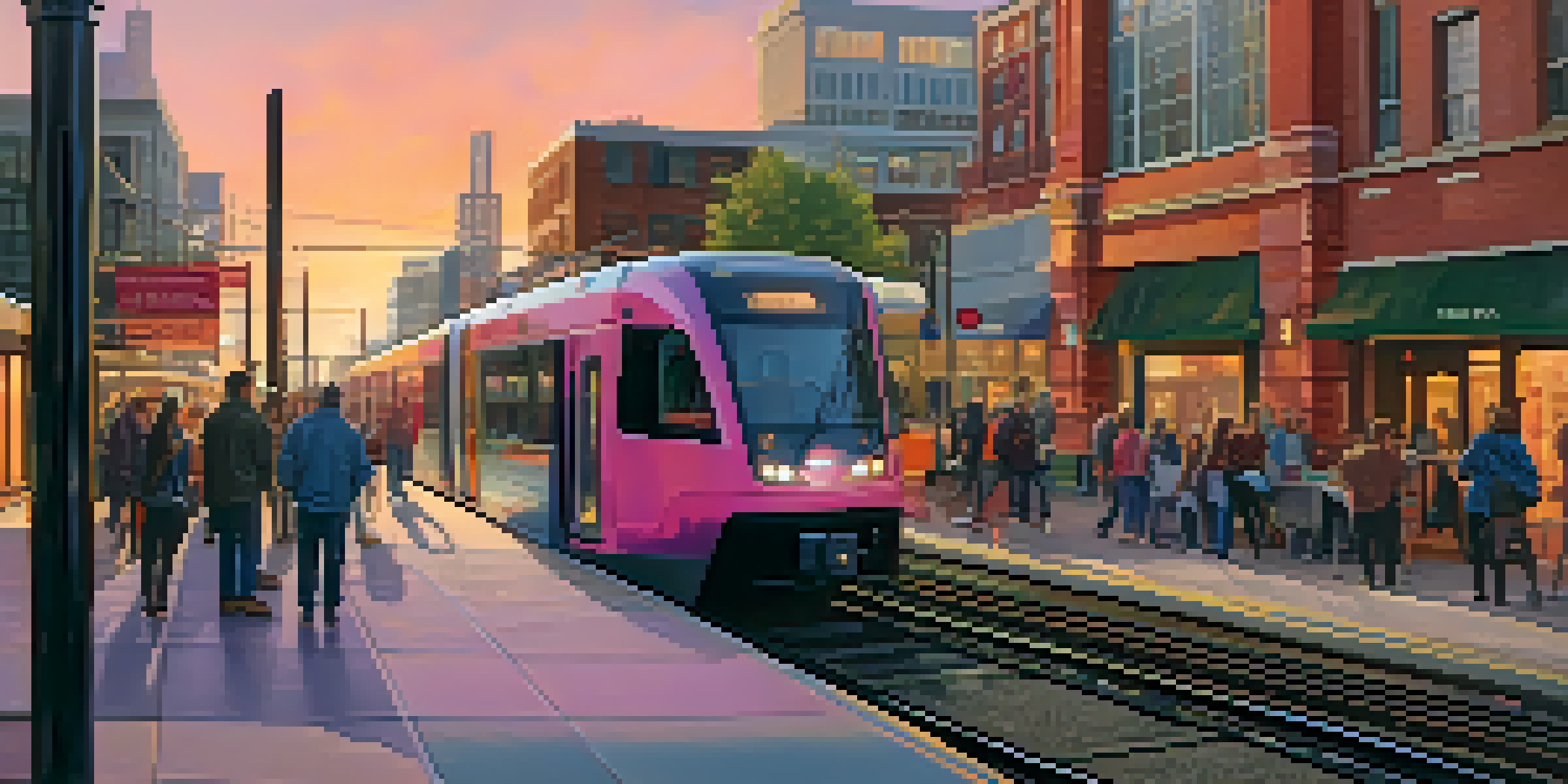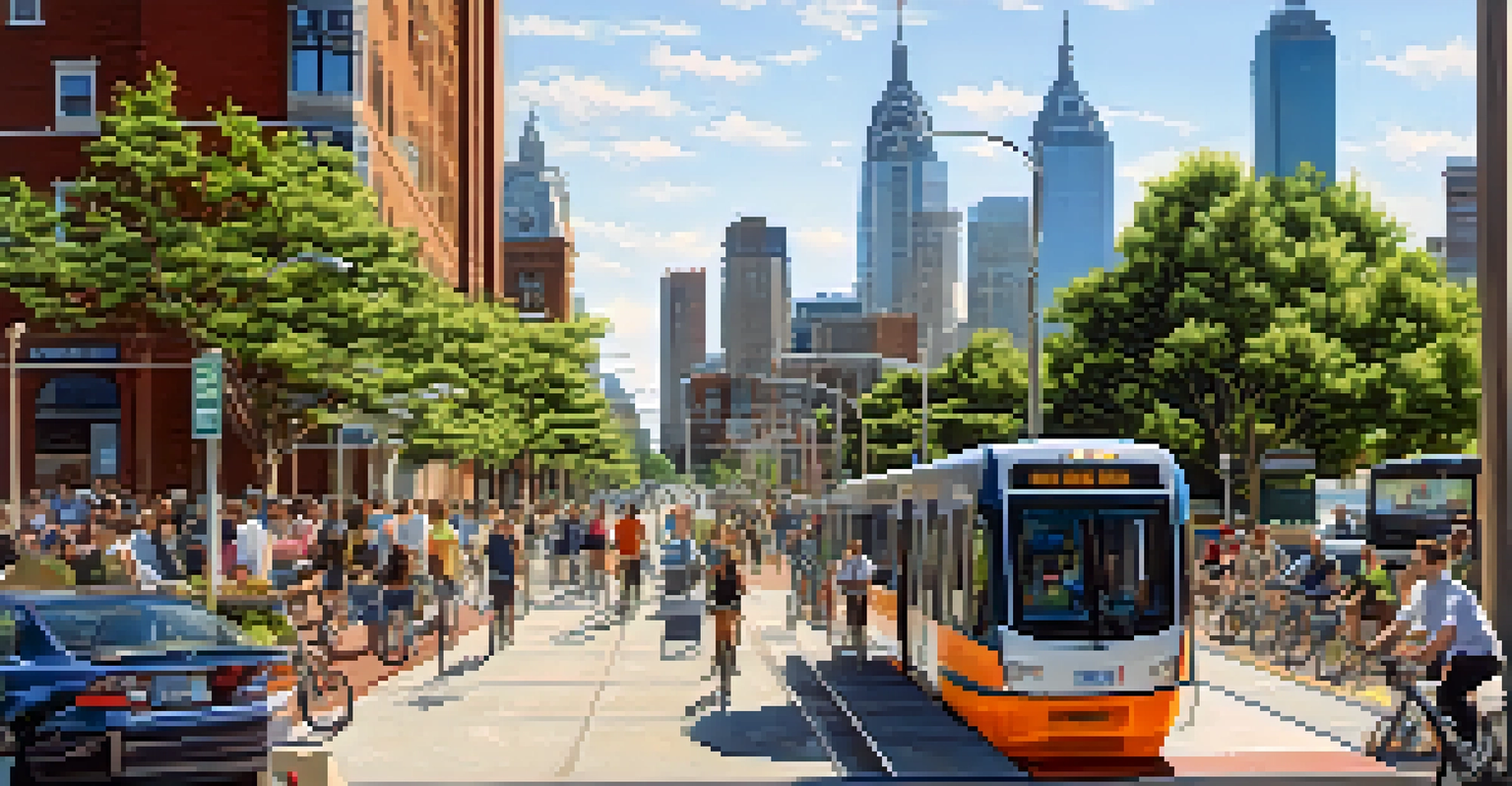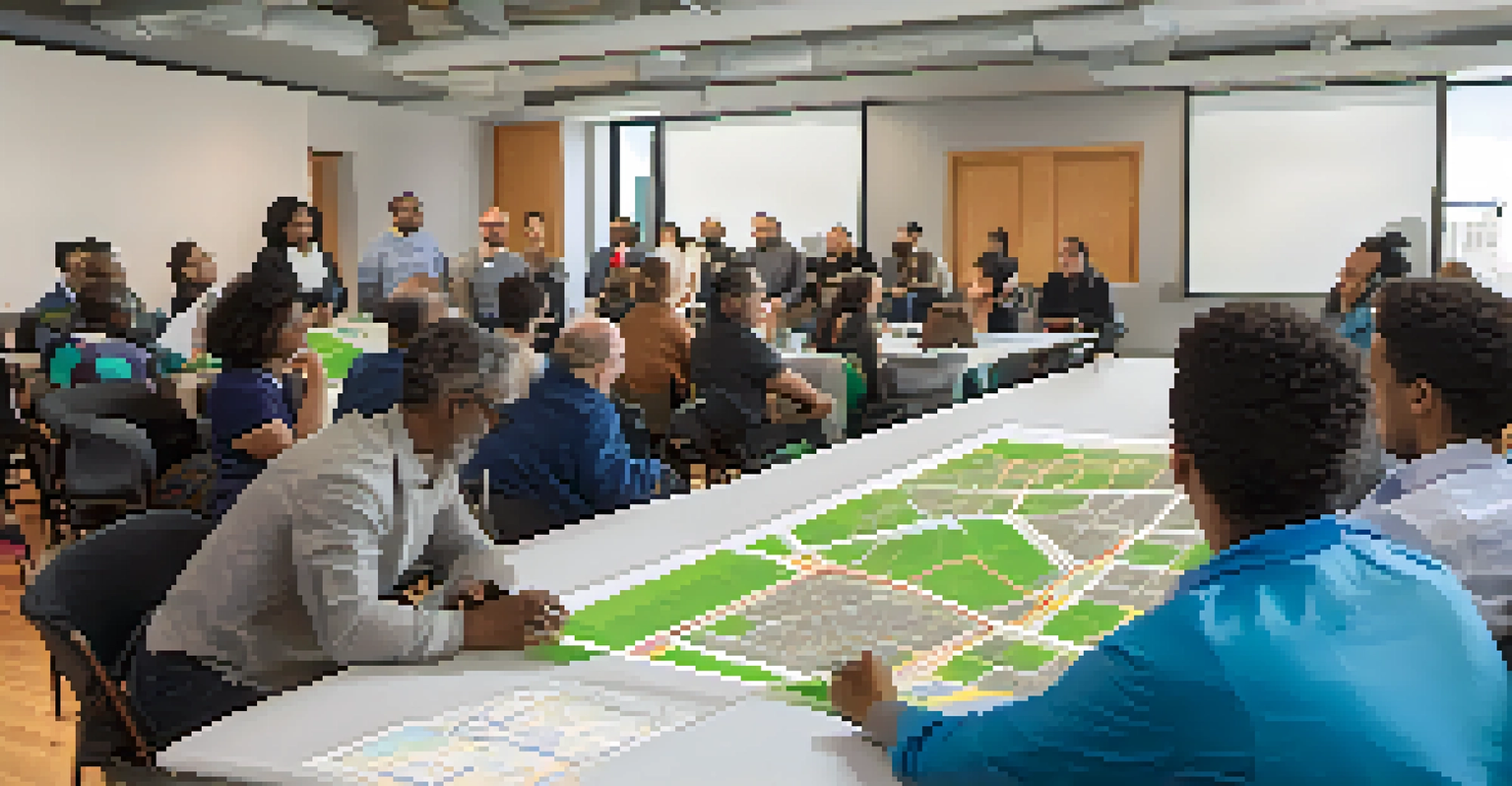Impact of Jersey City's Transit Developments on Local Economy

Overview of Jersey City's Transit Developments
Jersey City has recently undergone significant transit developments that are reshaping its public transportation landscape. Improvements like the PATH system enhancements and new light rail expansions aim to make commuting more efficient. These changes not only benefit residents but also attract visitors and businesses looking for accessibility.
Transportation is the backbone of any community, and it opens up opportunities for everyone.
The city's strategic location, just across the Hudson River from Manhattan, makes these developments even more crucial. As more people look for urban living with convenient transit options, Jersey City is becoming a hotspot for both work and play. This transformation is not just about moving people; it's about enhancing the overall quality of life.
With these upgrades, Jersey City aims to position itself as a competitive alternative to nearby metropolitan areas. The focus on sustainable and efficient transit options reflects a commitment to modern urban living, making it an attractive destination for new residents and businesses alike.
Boosting Local Businesses Through Transit Access
One of the most immediate impacts of improved transit is on local businesses. Enhanced accessibility means that more customers can easily reach shops, restaurants, and services throughout the city. With increased foot traffic, business owners are witnessing a rise in sales and customer engagement, leading to a thriving local economy.

For example, local cafes near transit hubs have seen a significant uptick in morning commuters grabbing their coffee on the go. Similarly, retail stores have experienced a boost, as shoppers can conveniently hop off a train and browse without the hassle of parking. This ripple effect benefits not only the businesses directly adjacent to transit stops but also the entire community.
Transit Improvements Boost Economy
Enhanced public transportation in Jersey City is driving local business growth and attracting new investments.
Moreover, as businesses flourish, they create jobs and contribute to the city’s tax base, which can be reinvested into community projects and infrastructure. This cycle of growth underscores the vital connection between transit development and economic vitality in Jersey City.
Attracting New Investments and Development
Transit developments in Jersey City are also attracting significant investments, both from local developers and large corporations. The improved infrastructure makes the area more appealing for new projects, including residential developments and commercial spaces. Investors are increasingly recognizing the potential for high returns in a city that is so strategically connected to New York City.
Public transit is a lifeline for urban development, connecting people with opportunities and enhancing quality of life.
For instance, the recent construction of luxury apartments near transit lines has drawn young professionals eager to enjoy urban living with commuter convenience. Developers are keen to capitalize on this trend, leading to a surge in new housing projects that cater to a diverse population.
As investment pours in, it creates a vibrant mix of communities and contributes to the city's overall economic landscape. This influx not only boosts the real estate market but also supports local jobs in construction and related industries, further enhancing Jersey City's economic prospects.
Impact on Property Values and Housing Market
The correlation between transit access and property values is well-documented, and Jersey City is no exception. As transit options improve, property values tend to rise, making neighborhoods more desirable. Homebuyers are increasingly looking for locations with easy access to public transportation, which directly influences the housing market dynamics.
In many cases, homes located near new transit developments have seen a significant appreciation in value. This trend can be seen in areas around new light rail stations, where demand has surged. As a result, homeowners are benefiting from their investments, while new buyers are eager to enter the market before prices climb even higher.
Job Accessibility for Residents
Better transit options are expanding job opportunities for residents, particularly in nearby urban centers.
However, this rising property value can also pose challenges, such as affordability for long-time residents. As the market heats up, maintaining a balance between growth and affordability becomes essential for Jersey City’s leadership to ensure that all residents can enjoy the benefits of transit development.
Enhancing Job Accessibility for Residents
With improved transit options, residents of Jersey City gain better access to job opportunities in surrounding areas. A robust transit system allows individuals to commute easily to workplaces in Manhattan and beyond, expanding their employment prospects significantly. This is particularly beneficial for those who may not own a vehicle or prefer public transport.
For example, many local residents now find it easier to apply for jobs in industries like finance, tech, and healthcare, which are predominantly located in nearby urban centers. The access to these job markets can lead to higher wages and career growth, contributing to the overall economic health of the community.
Moreover, as more residents find employment, it creates a positive feedback loop—more jobs lead to more spending in the local economy, which, in turn, supports additional job creation. This cycle emphasizes the importance of transit developments in fostering not only individual success but also community prosperity.
Supporting Sustainable Growth and Development
Sustainability is a key consideration in Jersey City's transit developments, as the city aims to reduce its carbon footprint and promote eco-friendly commuting options. By investing in public transportation, the city encourages residents to opt for trains and buses over personal vehicles, which helps alleviate traffic congestion and reduce emissions. This shift is vital for creating a healthier urban environment.
Moreover, the focus on sustainable transit options aligns with broader national trends towards greener living. Initiatives like bike-sharing programs and pedestrian-friendly infrastructure complement public transit, promoting a holistic approach to urban mobility. This not only benefits the environment but also enhances the quality of life for residents.
Focus on Sustainable Development
Jersey City's transit developments prioritize eco-friendly commuting, reducing traffic congestion and emissions.
As Jersey City continues to grow, its commitment to sustainable development will play a crucial role in shaping its future. By prioritizing eco-friendly transit solutions, the city is paving the way for a more resilient and vibrant community.
Community Engagement and Public Input
Community engagement plays a pivotal role in the success of transit developments in Jersey City. Local leaders and planners are increasingly recognizing the importance of involving residents in the decision-making process. By soliciting feedback and ideas, they can ensure that transit projects meet the needs of the community effectively.
Public forums and surveys have become common platforms for residents to voice their opinions on transit options, routes, and schedules. This inclusive approach helps build trust between the community and local government, fostering a sense of ownership among residents regarding the changes in their urban environment.

As a result, when residents feel heard and valued, they are more likely to support transit initiatives. This collaborative spirit not only enhances the effectiveness of transit projects but also strengthens community bonds, making Jersey City a more cohesive and connected place to live.